The Dakar has changed significantly over the last two decades, and not necessarily for the better. Here are some first-hand accounts from assistance crews and riders
Words + photography Max Sullivan
Back in my day… it’s easier now… you call that a challenge…?” I sound like a grumpy old man racing a bar stool and perhaps I am. Not a racer, though, but an off-road race mechanic with 14 Australasian Safaris and five Dakars under my tool belt, along with a few Finkes and Condo 750s thrown in for good measure.
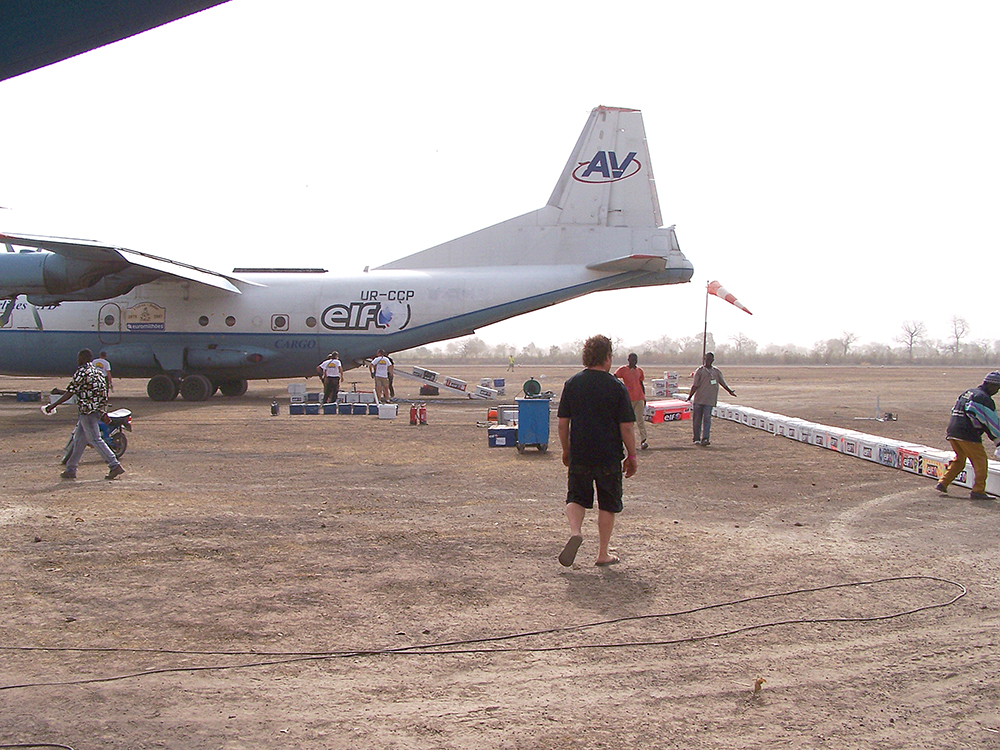
Twenty aeroplanes and 10 helicopters moved gear between African bivouacs in 2007
Over the years the natural progression of events like the Dakar Rally has changed – not only in location but the technology and resources supplied to, or available for, competitors and service crews. Here’s a behind the scenes look into the world of the service/assistance crew, AKA roadie.
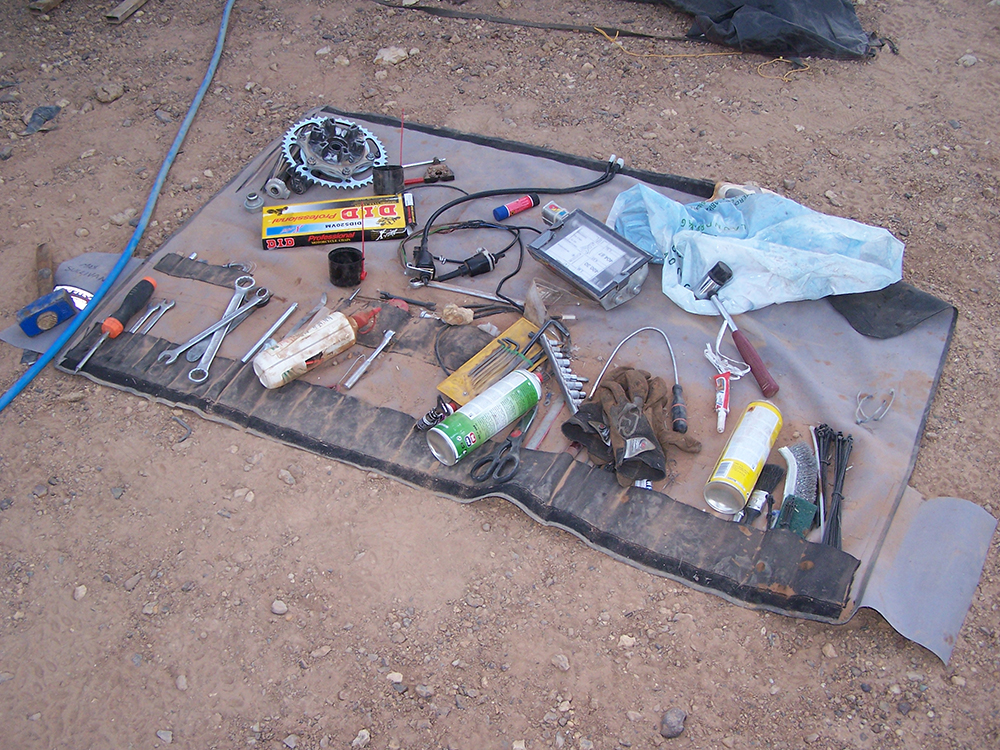
Privateer workshop: dirt base and a tool roll
Having been a mechanic in the last African Dakar (Lisbon in Portugal to Dakar in Senegal) in 2007, I can tell you those were tough conditions! Somehow I think if an event organiser suggested you sign a waiver and let 3000 people travel through an active mine field (please stay between the white markers) in north-western Africa, I don’t think you would get it across the insurance line these days. Everyone knows the Dakar is dangerous. Over the years many competitors have died during the event. Names like Fabrizio Meoni, Elmer Symons, Paulo Goncalves and Australia’s own Andy Caldecott. It is a sad fact that there is at least one fatality (competitor, service crew or spectator) almost every year the event has run.

The KTM factory team in 2013
The Dakar in Africa was quite an experience. The race was 16 days long, covering two continents and seven countries (if you count Western Sahara as its own country). Was it dangerous? Well, each support vehicle had to be fitted with a roll cage and four-point race harness, and approved helmets had to be used – and each support crew’s name and blood group had to be displayed on the door. The following year the event was cancelled due to terrorist threats after four French tourists were shot in Mauritania. I guess the answer is yes.
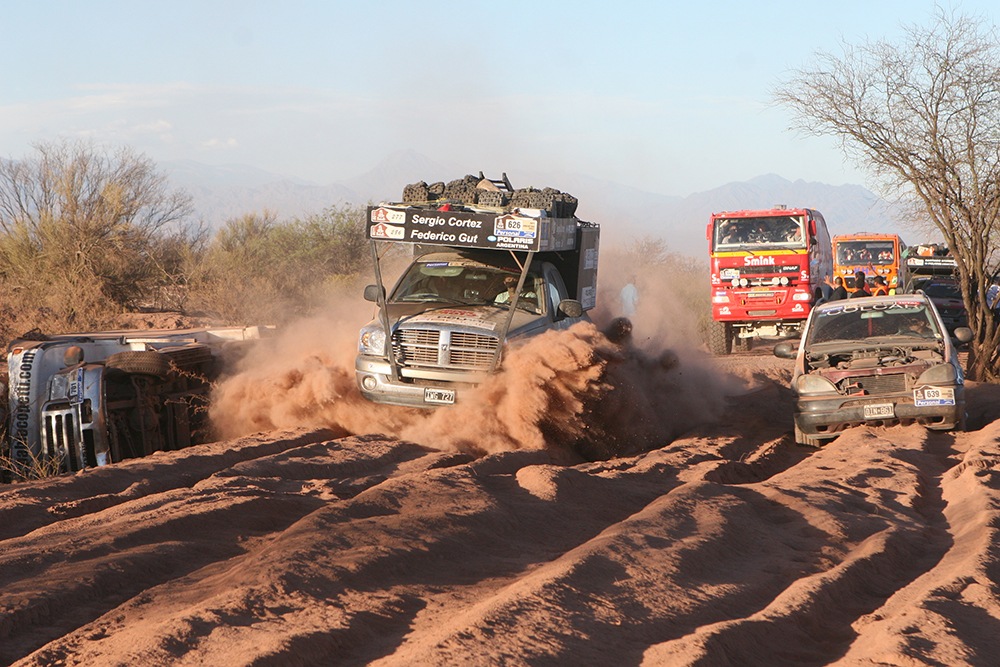
Argentina in 2011: adventure for the support crews, too!
To this day, I have never met another mechanic who has worked on three bikes on their own in the Dakar Rally. Normally it is one bike, one mechanic, so I am proud to say all three of my riders made it to the finish line at the famous Lac Rose outside of Dakar. It truly was the most physically and mentally exhausting thing I have done in my life.

One of Max’s three bikes to cross the finish line in Senegal in 2007
The conditions certainly did not help. Although the Dakar had been running for 30 years, the infrastructure was very basic and crude in Africa. No shower cubicles, no clean portaloos – even drinking water was scarce. If you even had time for a shower, it was a row of open top, plywood, makeshift humpies with one pipe feeding water in at the end. The cubicle closest to the outlet would scald you good and proper, while the 15th one at the other end was lucky to have a dribble of lukewarm water.
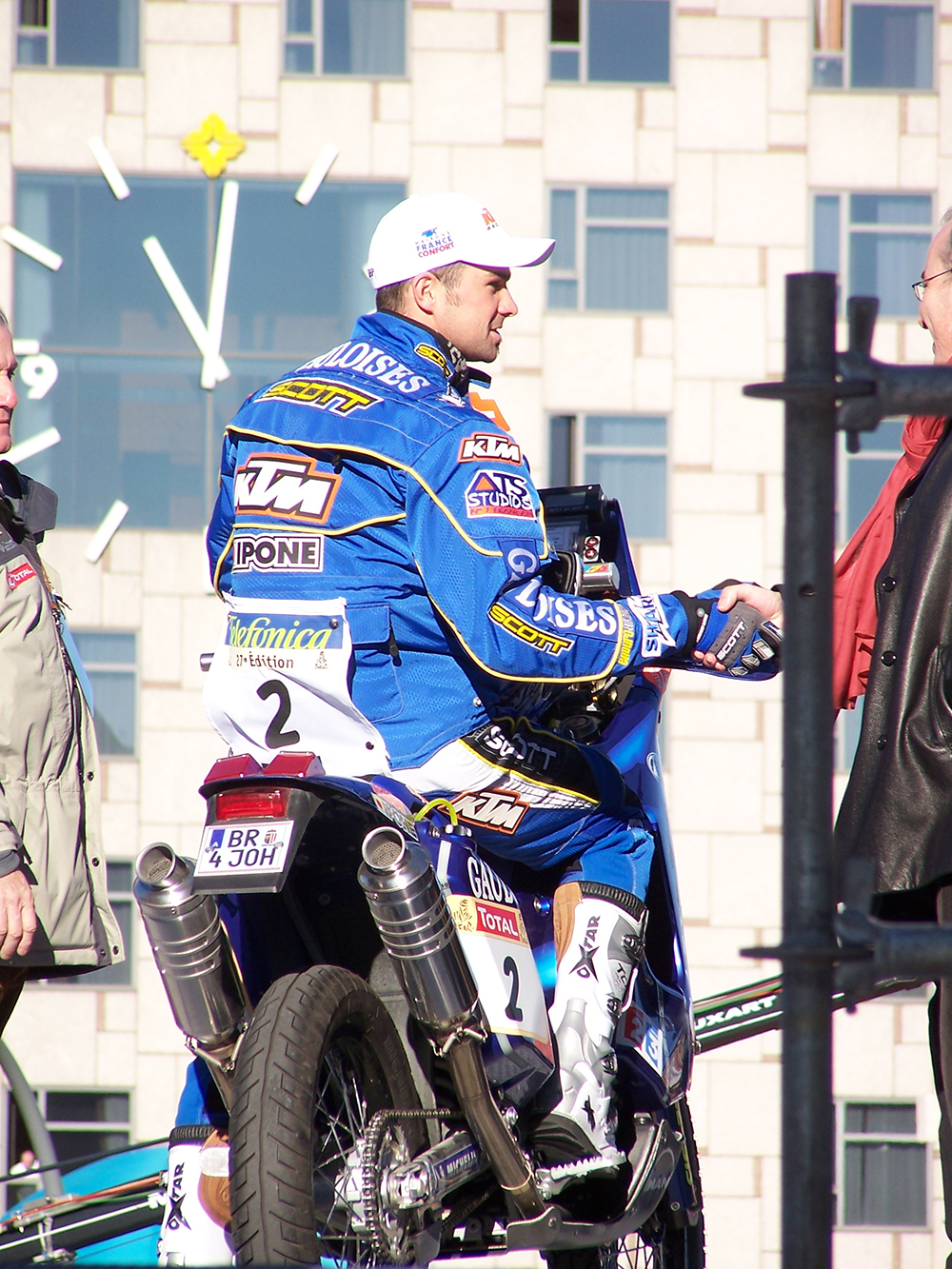
Despres leaving Barcelona in 2007
Accommodation is your pop-up tent and sleeping bag, all of which is covered in sand by the second night – but it didn’t matter on the nights I had to work right through with no sleep at all. The bikes must be ready for the following morning’s start, so you must keep going until they’re ready.

In my African Dakar adventure, assistance crews covered approximately 7000km, compared to the 3000km covered by crews in the 2023 event. There were no loops out and back to the same bivouac like they have today. This gives service crews a break. Time to sleep and prepare for the next day. Every day for us was point to point which was somewhere between 400 and 800km per day. We did have one rest day in the middle of the race, which is only a rest day for competitors. For service crew, it is a full day working on your bikes and preparing for the second half.
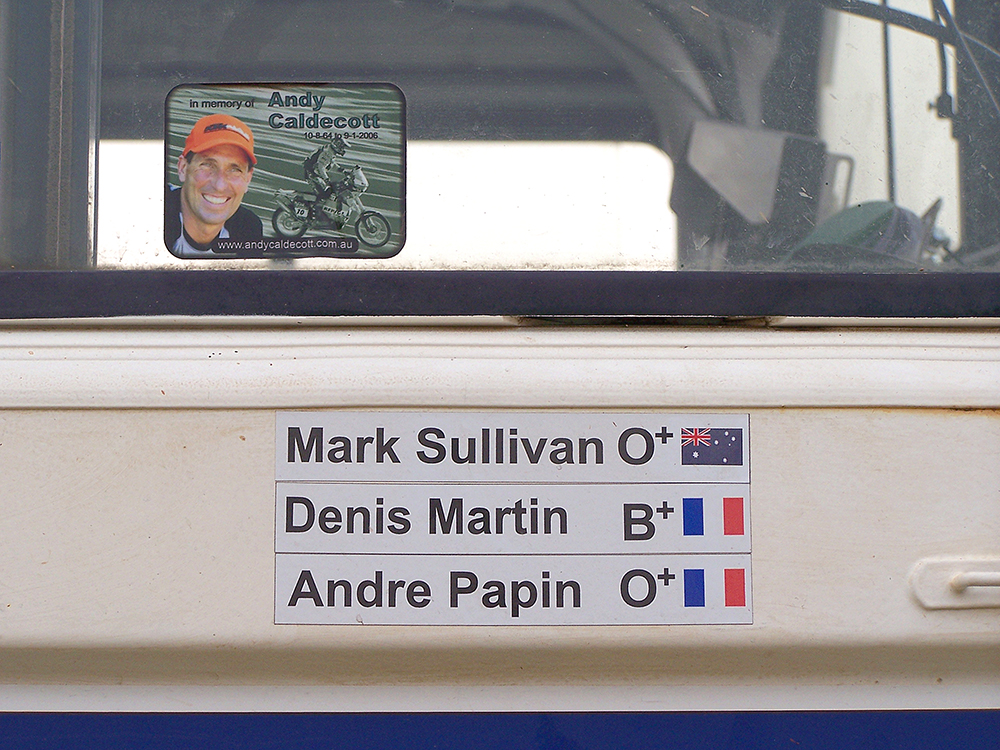
Support crew and their blood types: things did get serious in Africa
The marathon stage in Africa meant no overnight service for competitors, but for us it meant two days to cover 1400km at a maximum speed of 90km/h in our six-wheel drive truck. At one stage I woke up in the middle of the night to find the driver weaving across the open desert with no roads in sight. Six spotlights lit up the sparse desert as he searched for a half-buried tyre, which was the waypoint, to then head towards compass reading 160 degrees.
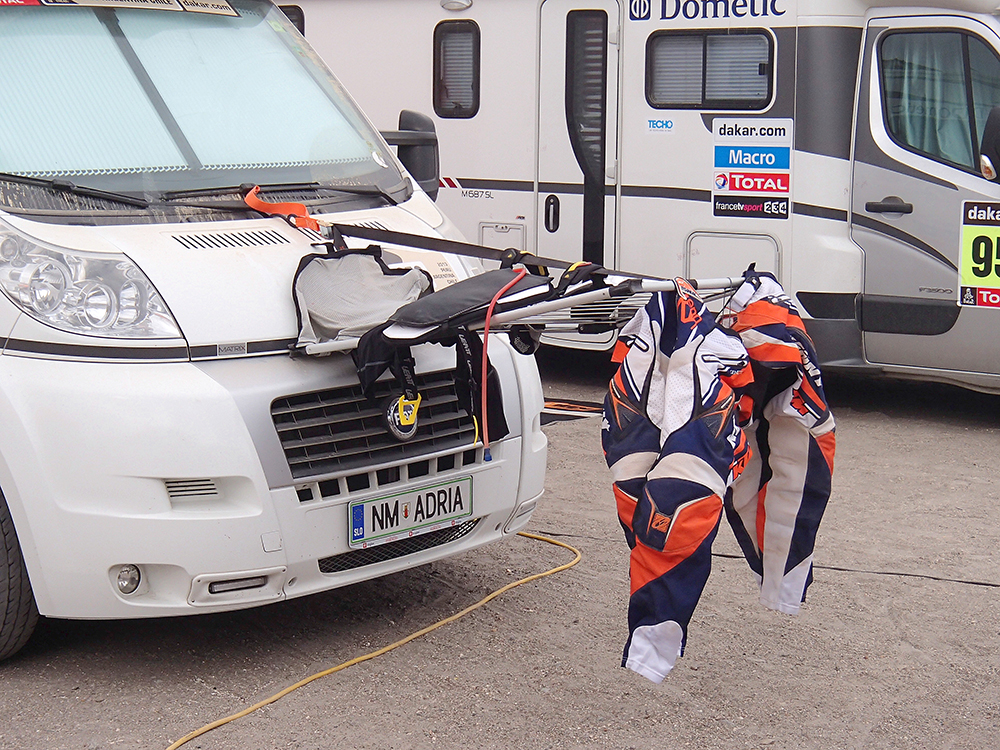
Improvisation, both during the African and South American eras
Navigating like this is a far cry from the Trippy GPS used today which not only shows roads, but also speed limits and fuel stations. Our truck often arrived in the dark, after our riders had arrived. I averaged only four hours sleep per night for 16 days and I swear it took me a month to fully recover when I arrived home.

The crowd gathers in Portugal in 2006
The Dakar means so many things to so many people. While the old-school African Dakar was not the money-making juggernaut it is now, it certainly holds a very special place in the hearts of those who were lucky enough to experience it. The racing these days is still just as tough (debatable, when was the last time you saw a top rider finish in the dark?) but the overall experience has changed significantly. Today’s new riders and crew will probably never experience what the original Dakar was like.
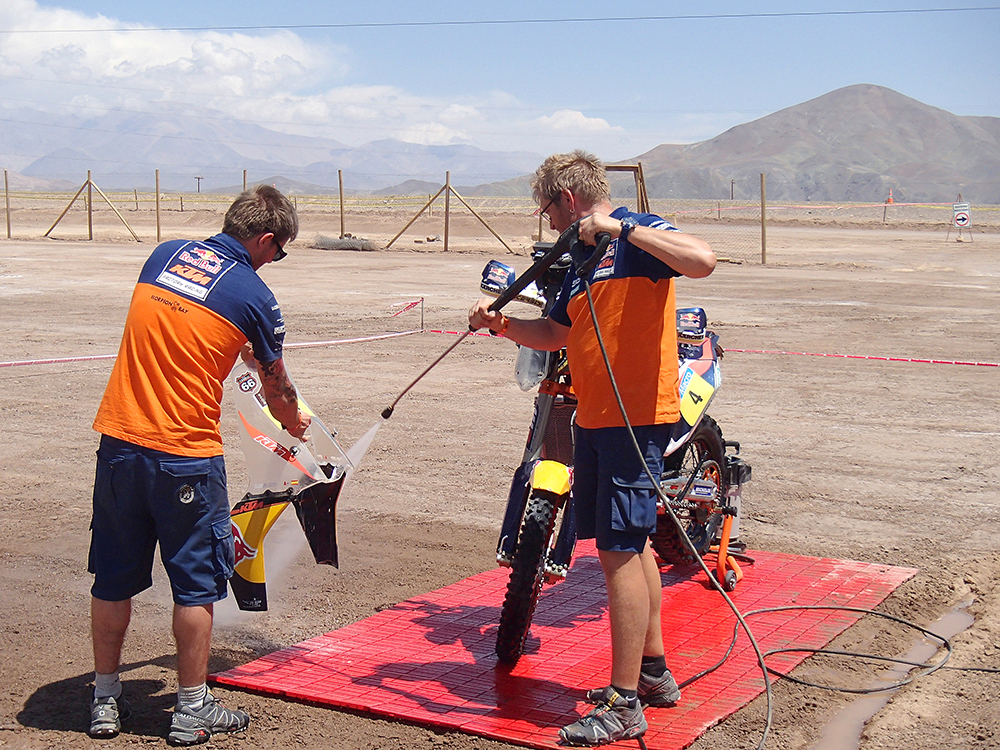
Even in the desert, pressure washers for the KTM team in 2014
Just think of that ride you did with your mates, where it rained, you were soaked and cold, the bike broke down, your mate had a flat tyre and the pub had no beer. These type of rides are not fun at the time, they push your limits but are the the most rewarding and memorable. You talk about those rides for years… African Dakar? Pull up a bar stool… have I got a story for you!
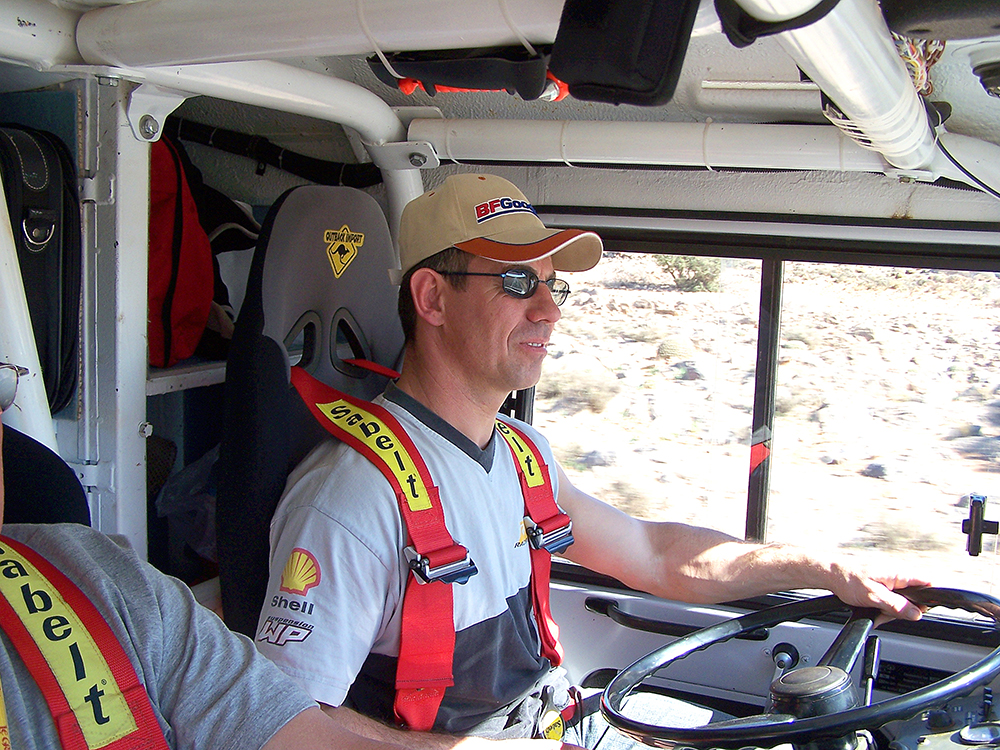
Suppprt vehicle in 2007; Max spent 17 days with two non-English speaking Frenchman, so there was very little conversation…
Roland Bruckner
When it comes to Dakar experience, few can match the 23 Dakar Rallies that Roland Bruckner has attended. Add to that, the Bavarian has been part of the winning KTM team an astonishing 12 times! For 10 years, Roland was the personal mechanic of five-time Dakar champion Cyril Despres, and until recently worked at the KTM Factory in Austria. I caught up with ‘Rollie’ to find out more about his rally achievements and how the Dakar has changed for him.
“My first two Dakar adventures were with the BMW Boxer team and, following that experience, I joined the KTM factory team where I not only worked at the Austrian factory but attended races all over the world. I lost track of how many World Rally Championship races, probably over 100, but the best was the 17 Dakar Rallies I worked at for KTM. Recently I have joined the Hero team and am enjoying the new challenge of a different team, new bike and rider.
“My most memorable Dakar was my first one in 2001. As a mechanic, I actually travelled in a BMW race truck, completing the entire race course. At the end of each day, I had to arrive at the bivouac and start working on the factory BMW bike, then back in the race truck for the next day. It was by far the hardest Dakar, but also the most rewarding and enjoyable.
“Africa was always a challenge. You must plan ahead with fuel, and carry any spares you might need for the bikes or assistance vehicles. If you break something, there are no shops to buy a new one! You improvise and overcome to keep mobile. Travelling from bivouac to bivouac was tough. Navigation was via a paper road book and GPS, the same as the competitors, even though we are not on the racetrack. Often there were no roads at all, just desert. We saw very few people and felt very isolated.
“South America was a big surprise, especially in the first few years with massive crowds lining and even blocking the roads.

KTM factory setup in Africa, with cigarette advertising still to the fore
“In 2009, heading into Mendoza, we took two hours to travel just 5km as the road was a sea of spectators! The people were so nice, so enthusiastic and everyone associated with Dakar was treated like a rock star.
“I was also very impressed with the extraordinary landscape. So spectacular and the crossing of the Andes at over 4500m is something I will never forget. Argentina, Chile, Peru and Bolivia were all very different, but much more civilised than northern Africa. Although sparsely populated, the towns and cities offered many shops to buy supplies and items to fix any problems you encountered along the way.
“But after 10 years, ASO needed to find a new home for the Dakar and that brought us to Saudi Arabia. While the racing is still challenging and great to watch, the participation of the service crews is not the same. For assistance it is really, really boring.
“There are no bars, no beer, no people on the side of the road. Not many locals are interested in the race. We don’t have the same challenge of navigating to our next bivouac. We simply drive on good roads to the next town.
“The bivouacs are huge and spacious, which is nice, but there is no adventure. We arrive early, set up and wait for the riders. We work for two hours and that’s it. There is live tracking so we know exactly where our riders are. In Africa, we had no idea where they were, or when they would arrive.
“After 23 Dakars, the race has lost some of its appeal to me. I very much enjoyed the hardship and challenge of Africa. The assistance really were an integral part of the overall team’s success. We worked hard, and when the work was done, we partied hard. We have to accept what it is like now. It is what it is.”
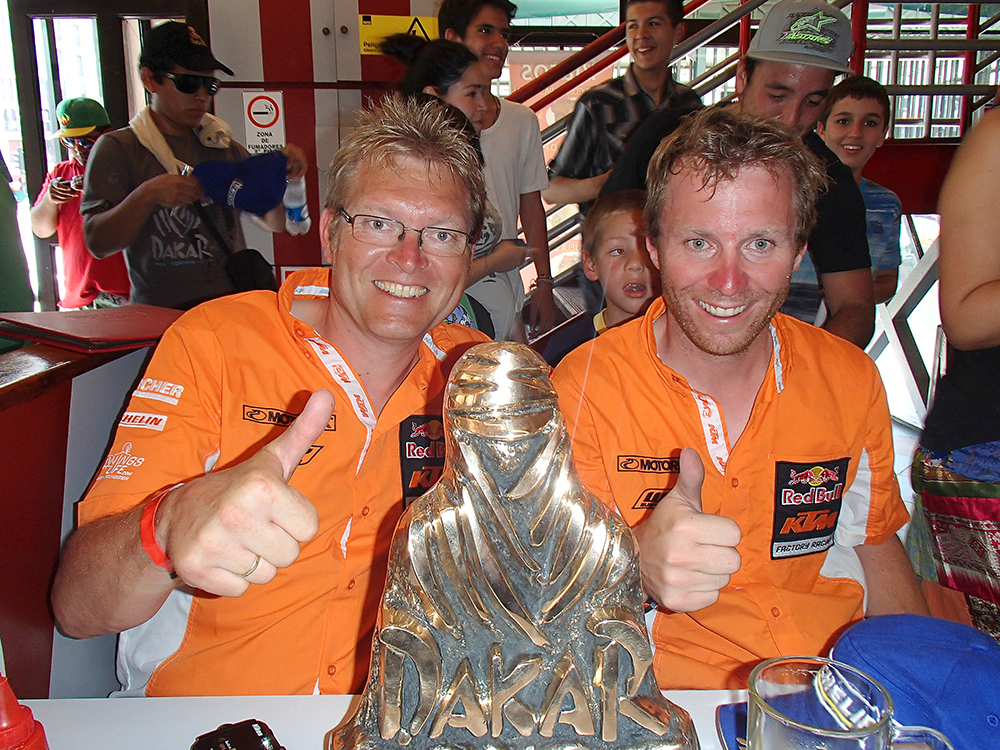
Roland (left) celebrates another KTM win in 2013
Cyril Despres
Cyril entered his first Dakar in 2000. Not as a factory rider, but in the unassisted Malle Moto class on a self-prepared XR400. The race started in the capital of Senegal, Dakar, and finished in Cairo, Egypt and he finished an incredible 16th overall in his first crack at the world’s toughest race. No wonder the factory BMW team offered him a ride as water boy the following year. I caught up with Cyril to find out how the Dakar has changed for him.
“This year was the first time since 2000 that I have not raced the Dakar, other than the cancellation of the event in 2008. I had so much passion for the race back in the beginning, I loved racing motorcycles. I had such a fortunate opportunity with the BMW factory team after just one Dakar which allowed me to ride as water boy (support for the main factory riders). However, halfway through the event, number-one rider Nani Roma was out after a crash. With no hope of an outright win, the manager gave me permission to go fast. I finished second outright on stages 17 and 19. A year later, I was picked up by the KTM factory team where I stayed for 10 years, winning five times and making the podium nine times.
“African Dakars were by far the most memorable. We raced across many countries and it was such an adventure and time of discovery. For me it was like a crazy dream come true. Africa was much more challenging conditions for everyone, including riders. Often there were no showers, and our comfort levels were not what they are today. Even factory riders slept in a tent at the bivouac which was located inside the airport as much of the equipment was transported by plane. We were not famous in Africa as there were no spectators, just 600 racers and 3000 crew. It was all about the desert racing. Africa is very special to me.
“Once we started racing in South America, things changed. Massive crowds were surrounding the bivouacs, blocking the roads and service stations. I did sleep in a tent the first year, but once we knew how it worked motorhomes became the new normal. Not only could we have quiet, heat, air conditioning to relax in, but we had our own food and could take more clothes! In Africa, space was a premium. That meant three pairs of gloves for the entire event. Start with one set of riding gear, and one new set for the finish. South America was luxury: new gear and gloves every day!

“Over the years the Dakar has changed. However, the basic fundamentals of the race have been the same since 1978. Your bike has two wheels, handlebars and a seat. You ride from the start to the finish the entire way, either liaison stage or race stage. However, the kilometres covered now are less than the early days. The organisers take care in making a safe route, aided by more detailed maps and GPS. Rider safety has improved with newer versions of Iritrac system which will control riders speed in certain areas as well as improved communication. When a rider crashes, the control team in Paris can call via the inbuilt phone, and ask if you need help. This can be heard from 20m away. There are now more medical helicopters on call for faster care of injured competitors.
“The higher profile of the Dakar has brought more money, more attention and more professionalism to the event. Riders now have much better preparation for the event and are surrounded by trainers, physio and managers.
Saudi Arabia is different again. The country is nice, the terrain is nice but it is not the best way of racing for me. The bivouacs are large and spacious but in the middle of the city. Some competitors really like this, but for me it was strange. The crews had access to fantastic facilities including a pool. They wait for the rider in comfort.
“The next day they just drive 400km down a bitumen road to the next lavish bivouac. The adventure of the Dakar has changed. Although the competition is the same, the racing is great, but race has also evolved for safety and comfort. This is not the same challenge as Africa.
“I love Africa. If the Dakar came back to Africa, it would mean a lot to me. I hope it will happen one day for that continent. If it did, I would love to be there. It would be like a dream for me and I hope I am fit enough to ride a bike again!”
